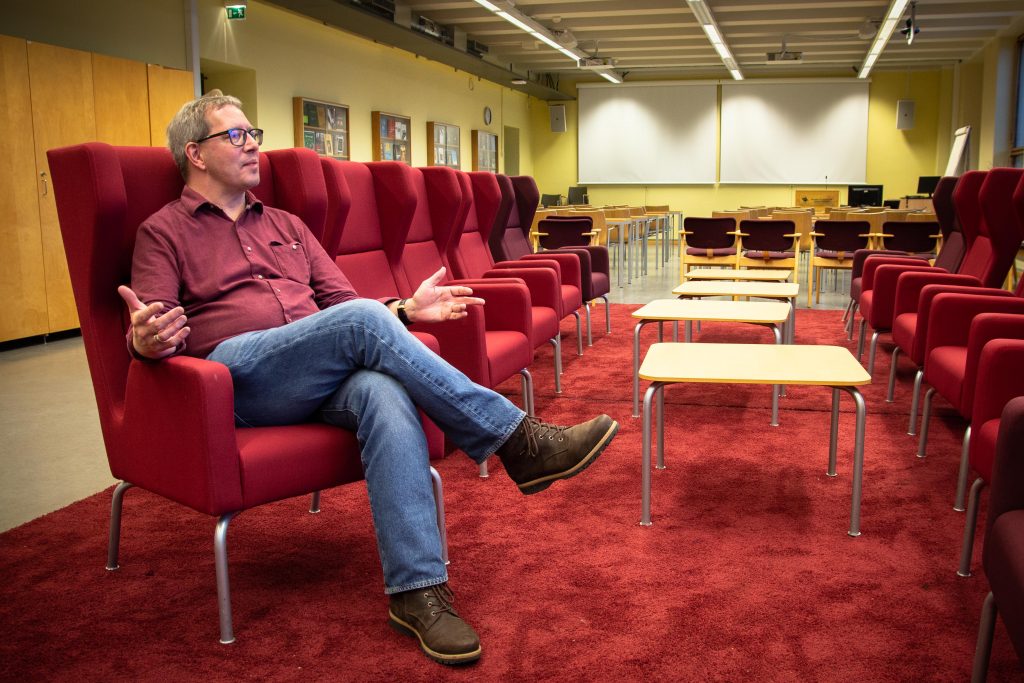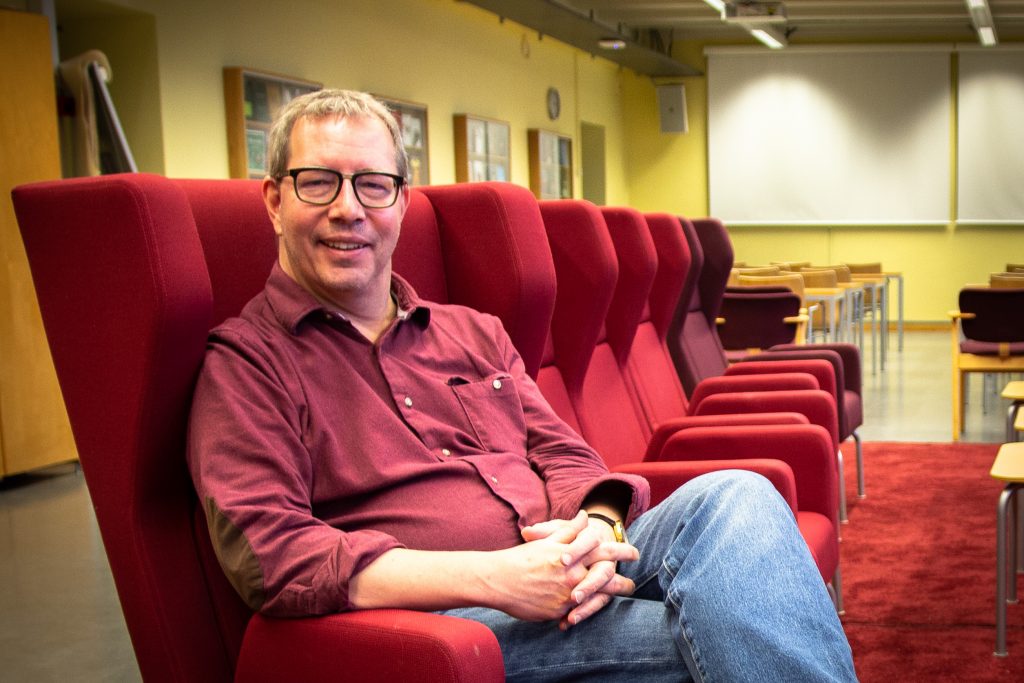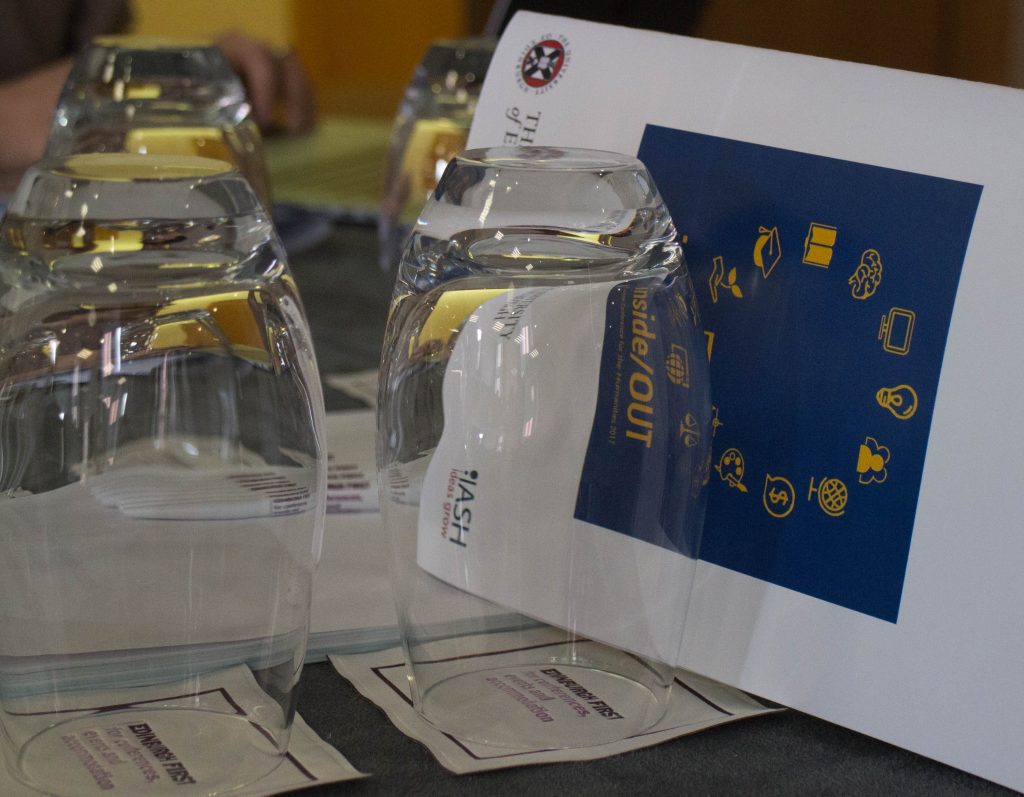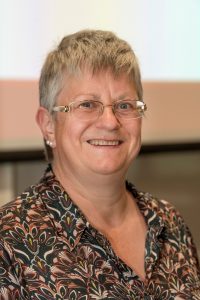By Sofie Henriksen
In anticipation of the work of Finland’s Truth and Reconciliation Commission Concerning the Sámi People (TRC), the Helsinki Collegium for Advanced Studies (HCAS) hosted the online event “Truth, Injustice and Reconciliation in Comparative Perspective: Finland, Canada, United States” on May 25th, 2021, for which 120 people from academia, government and civil society in 12 different countries registered.

Outi Pieski: Beavvit – Rising Together, installation, 2021. Photo by Sang Tae Kim.
In line with the Collegium’s interdisciplinary mission, the event brought together Professor of Political Science Rauna Kuokkanen (University of Lapland), Professor of Law Mayo Moran (Trinity College, University of Toronto), and Professor of History David Collins (HCAS/Georgetown University) to discuss historical injustice and reconciliation in a comparative perspective. The event was moderated by Karen Knop, international lawyer and Jane and Aatos Erkko Visiting Professor at the Helsinki Collegium in 2020–2021, and Tuomas Forsberg, the director of HCAS and an expert in international relations.
Truth and Reconciliation Process in Finland concerning the Sámi People
According to its mandate negotiated between the Finnish government and the Sámi Parliament, the purpose of the Sámi TRC in Finland is threefold:
“to identify and assess historical and current discrimination, including the assimilation policy of the state and violations of rights, to find out how they affect the Sámi and their communities in the current situation, and to propose ways to promote links between the Sámi and the state of Finland and among the Sámi people.”
“By forming a common understanding of historical and current discrimination,” the TRC is intended to “lay the foundation for reconciliation between the Sámi and the state and for structural change and trust-based interaction that supports the ability of the Sámi to maintain and develop their own language and culture, including traditional livelihoods – at the core of which is the connection to land and water.”
Rauna Kuokkanen, Research Professor of Arctic Indigenous Studies at the University of Lapland, discussed the prospects for a truth and reconciliation process in Finland. Drawing on political theorist Catherine Lu’s work on justice and reconciliation, Kuokkanen focused on the TRC’s mandate to address contemporary as well as historical injustice and its commitment to structural change. Kuokkanen argued that it would be inadequate to focus only on the examination and rectification of historical wrongdoings and relations between victims and perpetrators because this “interactional” form of justice, as Lu defines it, depoliticises reconciliation by concentrating solely on individual psychological healing. Instead, the foundational problems of structural injustice embedded in institutions, norms and practices must be addressed because they continue to reproduce injustice. Kuokkanen argued that structural reconciliation would require the Sámi to have “genuine and meaningful capacity to govern the central aspects of their society and culture, which inseparably include land rights and land use practices”. In other words, the self-determination of the Sámi people is at the core of structural justice and manifests as what Lu defines as ‘structural dignity’ within a reconciliation context. Kuokkanen categorizes the current form of Sámi self-determination of the Sámi as self-administration rather than self-government, based on the theoretical distinction by Stephen Cornell. Whereas self-government has decision-making authority and has a structure designed by Indigenous peoples themselves, self-administration is often imposed by outsiders, e.g. the settler state, and limited to administering the dissemination of state funding for cultural programs, service delivery and distribution of resources such as jobs.
Furthermore, Kuokkanen touched upon another important aspect of reconciliation related to structural injustice: how to hold the majority population accountable for past injustices. For this discussion, Kuokkanen drew on Iris Marion Young’s distinction between a ‘liability model’ and a ‘social connection model of responsibility’. Whereas the liability model assigns responsibility to the persons who have caused the injustice, the social connection model of responsibility aims at forms of structural injustice, in which linking the injustice directly to individuals is impossible. This is especially relevant in regard to colonial processes which took place in the past but continue as structural injustice in the present. With the social connection model of responsibility, the accountability is related to working against the unjust structures, in the Finnish context settler colonialism, which the majority is benefiting from and often perpetuating. In this sense, the liability model is backward-looking, whereas the social connection model is forward-looking. To illustrate this point, Kuokkanen gave an example of today’s teachers. Although they are not held responsible for the discrimination and racism that took place in the Finnish residential schools to which the Sámi were sent, they do have a shared obligation to counteract unjust structural processes by educating their pupils about the history and culture of the Sámi people in an up-to-date and non-stereotyped way.
Truth and Reconciliation Processes concerning Indigenous-Settler relations in Canada
To contextualize the Canadian TRC, Mayo Moran, Professor of Law, Provost and Vice-Chancellor of Trinity College at the University of Toronto, introduced the background of the Canadian Indigenous-Settler relations and the Canadian colonial policies. Since 2007, Professor Moran has chaired the Independent Assessment Process Oversight Committee that assists in the implementation of the Indian Residential Schools Agreement, the agreement that led to the Truth and Reconciliation Commission of Canada. Canadian colonial policies were designed to eradicate the Indigenous presence through dispossession of Indigenous land, cultural genocide and forced assimilation. As a part of the assimilation policy, Indian Residential Schools were established in partnerships with various churches. For 150 years, approximately 150.000 Indigenous children were forcibly taken from their families and sent to brutal residential schools. Children were abused sexually, physically and spiritually. Countless thousands of children never returned nor received any burial if they died. The schools have inflicted a profound intergenerational trauma within Indigenous families and communities.
Moran referred to the 1991 Royal Commission on Aboriginal People (RCAP) as a forerunner to the Canadian TRC. A Canadian government appointed body, it included both Indigenous and non-Indigenous commissioners and had the broad goal of investigating the relationship between Indigenous peoples, the government of Canada and Canadian society. In 1996, RCAP submitted its five volume 4000 page report. It contained 440 recommendations including legislative changes as well as the establishment of an Indigenous Parliament to redress gaps in education, health care and housing – which, Moran pointed out, is interesting in the light of Kuokkanen’s discussion of forms of Indigenous self-determination. Moran also noted that RCAP was rather similar to the Finnish TRC in origin and scope. To some degree, Canada’s RCAP could appear to serve as a cautionary tale to those hoping that the Finnish TRC will result in significant changes. But while the majority of the recommendations of RCAP remain unimplemented, it was actually very important in paving the way for the later Canadian TRC. Among other things, it began to draw the attention of non-Indigenous Canadians to the lived experiences of Indigenous peoples. Many commentators also believe it was responsible for inspiring efforts to address the legacy of residential schools which had been little spoken about until then.
Partly as a result of the discussions that began in Indigenous communities after RCAP, in the late 1990s, survivors of Indian Residential Schools began to seek civil remedies for historic sexual abuse and to bring cases against the federal government and churches. By 2005, there were tens of thousands of claims also for loss of language and culture, as well as intergenerational harm. The only alternative was settlement and in 2006, the federal government, the Assembly of First Nations, and various churches signed the Indian Residential Schools Agreement. At an overall cost of between five and six billion dollars, the Agreement created several programs including most importantly the Canadian TRC. In contrast to RCAP, the context of litigation settlement meant that Indigenous people had a powerful voice—no agreement could be reached without their consent and the TRC was one of the most critical priorities of the Assembly of First Nations. Referring to Kuokkanen’s use of Lu’s distinction, Moran noted how the 2006 Agreement had elements of both interactional and structural reconciliation. The interactional element was addressed in several ways. For instance, there were two reparations processes, one for all who attended residential schools and an additional one for those who also suffered serious physical or sexual abuse. In 2008, the Canadian Prime Minister delivered an apology in the House of Commons to the survivors of the Indian Residential Schools. The structural elements were addressed by the TRC which was tasked with the considering larger relationship and locating the history of residential schools within the broader context of colonial policy and ongoing discrimination.
Moran pointed out that although many worried that the focus on litigation and residential schools would distract from the larger narrative, the way that the TRC approached the residential school experience enabled it to serve as a focal point through which the whole Indigenous-Settler relationship could begin to come into focus for ordinary Canadians. Unlike RCAP, which involved broad discussions about politics, colonialism and sovereignty, the TRC approached settler colonialism from a profoundly human point of view: the terrible story of children forcibly taken from their families. Through this history, as Canadians we began started to understand something critical about our own history and place in colonialism. Moran noted that it is too soon to assess the significance of the TRC, since its 94 Calls to Action are only partly implemented. However, the discussions around the TRC have changed the conversation in Canada and forced contemporary Canadians to acknowledge themselves as settlers for the first time, which is in itself a critical step towards reconciliation.
Georgetown University’s Working Group on Slavery, Memory and Reconciliation
David Collins, Core Fellow at the Helsinki Collegium for Advanced Studies and Associate Professor of History at Georgetown University, spoke of Georgetown University’s Working Group on Slavery, Memory and Reconciliation, which he chaired in 2015-2016, and the projects that have followed it. The Working Group (WG) was established to address slaveholding in the University’s history. Founded in 1789, the University ran in part on revenues generated by enslaved labor on plantations owned by the order of Catholic priests, the Jesuits, who ran the university. That history includes a notorious sale of 272 enslaved people in 1838, revenues from which were used to relieve the university from financial stress. The dialogue begun by the WG has continued and broadened to include the descendants of those enslaved by the Jesuit order in the US. Together these parties have, as recently reported in the New York Times, announced the erection of a foundation – the Descendants Truth and Reconciliation Foundation – devoted to alleviating racial discord and inequity in American society.
Before turning to several general insights, Prof. Collins highlighted important differences between his case and the Canadian and Finnish examples, e.g., that WG’s efforts were sponsored by a private and religious parties, and the State had/has no role; and that no direct participants in the historical events, as far in the past as they were, could participate in the WG’s efforts. Prof. Collins then offered five insights from his experience in these efforts. First, he noted the crucial importance of the descendants as participants in the discussions. The emergence of the descendants as a participant group followed the WG’s public handling of the university’s slave-holding history. Their work inspired others, who were descendants, to claim, rightly, the history as not simply the university’s but also theirs. Engagement with the descendants was not part of the WG’s initial mandate, and their emergence – ultimately as multifaceted and heterogeneous – took time; nonetheless, engagement with them became a central recommendation in the WG’s year-end report to the university. A second insight derives from this unexpected, difficult, yet fruitful engagement with the descendants: that a “common” history will still necessarily be look different from different perspectives, and to let one perspective dominate the story-telling inevitably leads to a distorted history. That was certainly the experience for the university as it was confronted by the history of the sale of 1838 as told by the descendants of those sold. The results have been enriching for the university and the Jesuit order.
Third, the WG’s work and the subsequent Descendant-Jesuit-University discussions took (and are taking) place in the larger context of race relations and tensions in the US, which constantly influence(d) those discussions. Several times over the last fifty years, the university and order had turned to address publically their history of slaveholding and slave-trading, but never before had the history attracted such widespread attention both within the larger university community and across the nation. Racial unrest since 2015 has provided a different backdrop to the historical investigations, and the history’s modern-day implications have been raised into high relief as never before. In short, context matters. Fourth, WG’s efforts as well as the subsequent dialogue have had a distinctive religious underpinning. On the one hand, this highlights a difference between the Georgetown case and many others, where religious language and divergent religious commitment can be an impediment to reparative projects on account of religious institutions’ participation in the injustices. On the other hand, in the Georgetown case it gave some common language and values for the emergent dialogue. In this instance, Catholicism – with its concepts of sin, confession, penance, atonement, forgiveness, reconciliation – has provided the common values that could be used both in indictment and in aspiration. Without such a shared touchstone, it is unclear how the Descendant-Jesuit-University dialogue would have proceeded. Fifth and last, there is so much unpredictability in this work. Participants need to be open to that, even as they draft ways forward and work toward particular goals. In the Georgetown case, no one anticipated in September 2015 that descendants would in 2021 be at the heart of any program of atonement and melioration. And yet today their participation is the single-most gratifying component to the work begun in 2015. Openness to the unplanned, Prof. Collins concluded, is clearly among the most important qualities for any group undertaking a process such as this.
Discussion
One of the themes discussed after the speakers’ presentations was that of the understandings and implications of the word ‘reconciliation’. Referring to Kuokkanen and Moran’s presentations, Tuomas Forsberg brought up how reconciliation, referring to the reconciling of two conflicting parties, is a substantively “thick” concept and can seem demanding and infeasible to many. In the Georgetown context, reconciliation was initially a part of the DTRF’s mandate, but Collins described how, for reasons such as Forsberg raised, the word “atonement” was slowly replacing the use of reconciliation. Atonement was a word that emerged in the discussions in which descendants were involved. Collins told of a descendant who, in line with the Catholic sacrament of confession, reminded the DTRF that reconciliation comes with penance. In a comment that illustrated the complexities of the implications of reconciliation, Moran noted that in the Canadian discussions on reconciliation, a departure from religious concepts was necessary precisely because Canadian churches had been involved in the Indian Residential Schools.
An audience member asked whether and how the Finnish TRC could contribute greater collaboration and solidarity within the Sámi community – a community in which certain conflicts are directly linked to colonization. Kuokkanen emphasized that the Finnish TRC is mandated to focus on the relationship between the state and the Sámi, and cannot resolve all conflicts. That does, however, not preclude reconciliation outside the context of the State-Sámi relations. To this, Moran added that the Canadian TRC held seven national events that brought together different groups to discuss reconciliation in what were called ‘learning tents’. Subsequent to these events, community initiatives separate from the national TRC process emerged focusing on commemoration and reconciliation in various ways. Moran described how one initiative was to restore a previous Indian Residential School and make it into an educational center for students to learn more about colonialism. In a starkly opposite and more symbolic initiative, an Indian Residential School building was burned to the ground.
The last topic raised by the audience was the role of human rights in TRCs, which varied between the Canadian and U.S. contexts. Moran described how human rights were at the core of the Canadian TRC, both in a backward-looking manner, in terms of describing the wrong doings as violations of human rights, and in a forward-looking manner, in terms of Indigenous rights. In contrast, Collins described how appealing to human rights in U.S. courts or through U.S. legislation is not very well developed in relation to slavery and colonization. In relation to the Finnish TRC, Kuokkanen observed that one of its strategies is to strengthen the implementation of Sámi rights, articulated as collective rights in the United Nations Declaration on Rights of Indigenous People. Therefore, the human rights discourse is embedded in the mandate of the TRC, but it is obviously still too early to say whether it will in fact be central to the discussion and whether the final report will be framed in terms of human rights violations.
—
This event was held just before the tragic news currently unfolding in Canada involving the discovery of children’s remains in unmarked graves on the sites of a number of former Indian Residential Schools. On June 30, the Lower Kootenay Band said 182 human remains had been found at St Eugene’s Mission residential school, near the city of Cranbrook, British Columbia. The week before, the Cowessess First Nation in Saskatchewan announced the discovery of 751 possible unmarked graves. These discoveries followed the May 27 announcement by the Tk’emlúps te Secwe̓pemc band that they had found 215 unmarked graves, most of which are believed to be children.
The Canadian Truth and Reconciliation Commission addressed the issue in Volume 4 of its report entitled “Missing Children”. In 2015, it identified over 4100 children who were known to have died while at residential school but noted that there were likely thousands more, many in unmarked and untended graves.






